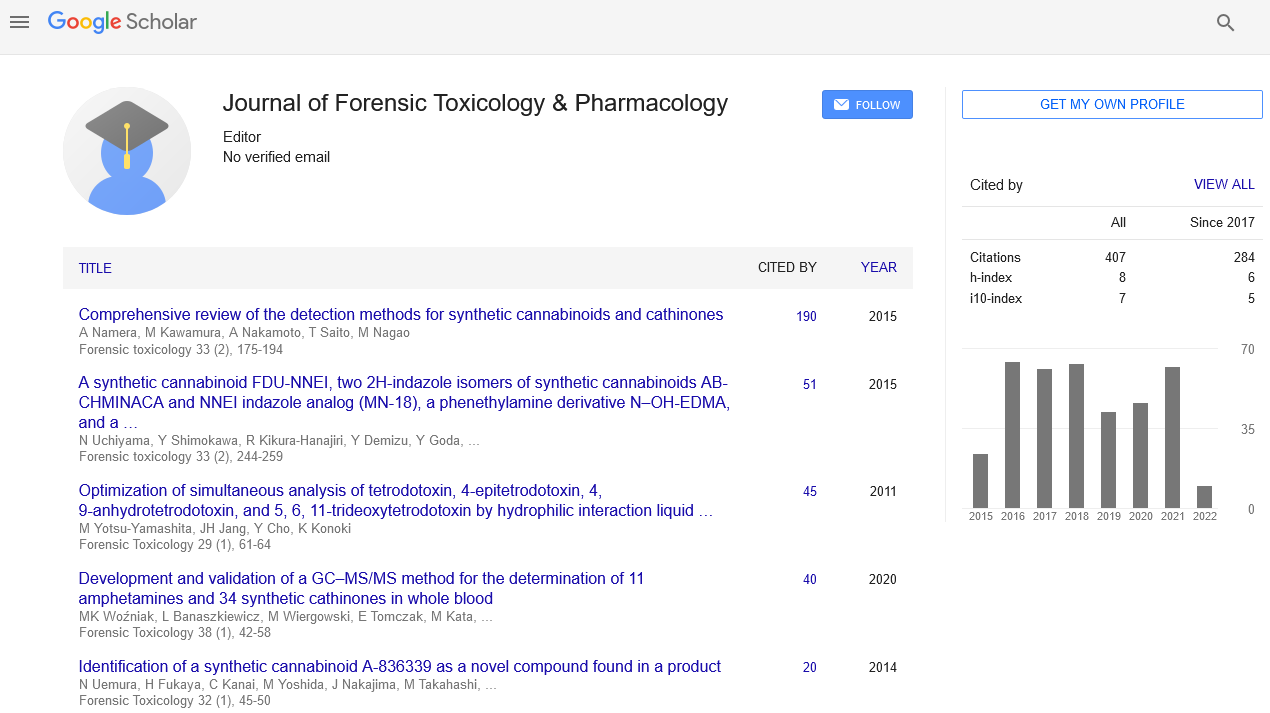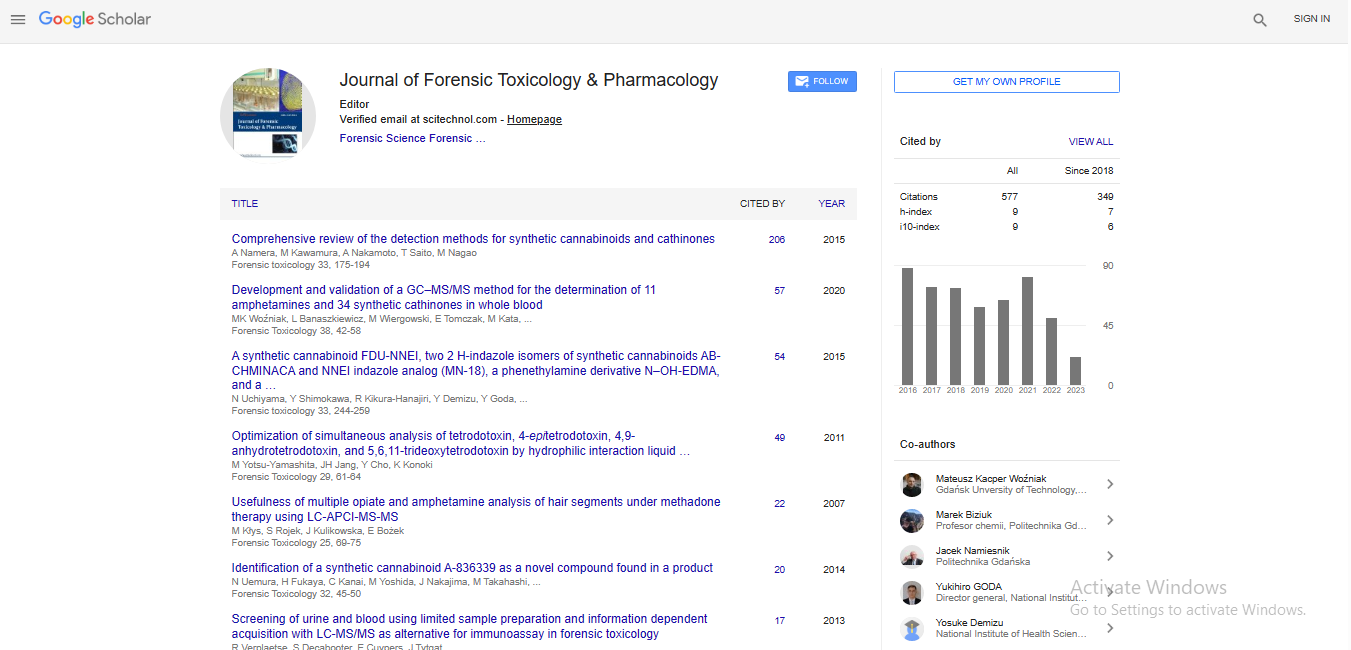Opinion Article, J Forensic Toxicol Pharmacol Vol: 13 Issue: 3
Endocrine Disruptors in Pharmaceuticals: Toxicological Impacts on Reproductive Health
Nikhil Sharma*
1Department of Toxicology, All India Institute of Medical Sciences (AIIMS), New Delhi, India
*Corresponding Author: Nikhil Sharma,
Department of Toxicology, All India Institute
of Medical Sciences (AIIMS), New Delhi, India
E-mail: sharmanikhil@gmail.com
Received date: 26 August, 2024, Manuscript No. JFTP-24-151887;
Editor assigned date: 28 August, 2024, PreQC No. JFTP-24-151887 (PQ);
Reviewed date: 11 September, 2024, QC No JFTP-24-151887
Revised date: 18 September, 2024, Manuscript No. JFTP-24-151887 (R);
Published date: 25 September, 2024, DOI: 10.4172/JFTP.1000198
Citation: Sharma N (2024) Endocrine Disruptors in Pharmaceuticals: Toxicological Impacts on Reproductive Health. J Forensic Toxicol Pharmacol 13:3.
Description
Endocrine Disruptors (EDs) are compounds that interfere with hormonal systems, potentially leading to adverse reproductive health effects. These chemicals are found in various sources, including pharmaceuticals, where they pose concerns due to their ability to mimic, block or alter natural hormones. The impact of endocrine disruptors on reproductive health is gaining attention in toxicological research, given the broad use of pharmaceuticals across populations.
In pharmaceuticals, endocrine disruptors primarily originate from certain active ingredients and additives, which are necessary for medication stability, absorption or effectiveness. However, some of these compounds can unintentionally interfere with hormonal signaling. For instance, compounds that resemble human estrogen or androgen hormones can bind to hormone receptors, leading to inappropriate cellular responses. Drugs for hormone-related conditions, certain birth control formulations and even some antiinflammatory medications contain compounds that have shown potential to act as EDs. Although these medications play a role in treatment, the presence of such compounds raises concerns when considering unintended side effects on hormone-sensitive tissues.
Endocrine disruptors typically interfere with the Hypothalamic- Pituitary-Gonadal (HPG) axis, which controls reproductive hormone production and regulation. When EDs mimic natural hormones, they bind to hormone receptors on target cells, leading to altered gene expression, protein synthesis and even cell growth. This disruption can affect reproductive organs, including the testes and ovaries, potentially leading to fertility issues, hormonal imbalances or developmental problems.
Another concern is the bioaccumulation of EDs in body tissues over time, especially in fat stores, as many endocrine disruptors are lipophilic. This accumulation can prolong the exposure of sensitive tissues to disruptive compounds, heightening the risk of adverse effects even after discontinuing the pharmaceutical source. Understanding these mechanisms provides a framework to assess how different pharmaceutical endocrine disruptors might impact reproductive health.
In males, endocrine disruptors in pharmaceuticals can lead to altered sperm production and quality. Compounds that mimic or inhibit testosterone, a primary male reproductive hormone, are particularly concerning. Animal studies have shown that testosterone mimics can reduce testicular size, decrease sperm count and impair sperm motility, which may reduce fertility. Additionally, exposure to EDs during development periods, such as in utero or puberty, can have lasting effects on reproductive health, as hormonal interference during these windows may alter the normal developmental trajectory of the male reproductive system.
In females, pharmaceutical endocrine disruptors can disrupt the delicate balance of estrogen and progesterone, hormones difficult for ovarian function and menstrual regulation. This disruption may result in issues such as irregular menstrual cycles, ovarian dysfunction or early onset of menopause. Certain endocrine disruptors are also associated with Polycystic Ovary Syndrome (PCOS) or endometriosis, conditions that can significantly impact fertility and quality of life. Studies on laboratory animals suggest that prenatal or early-life exposure to estrogenic endocrine disruptors can alter the development of the female reproductive system, potentially impacting fertility later in life.
While the toxicological effects of EDs in pharmaceuticals present a growing concern, there is still much to learn about the precise impacts across different populations and exposure levels. Many studies currently focus on high-dose exposures in animal models, leaving gaps in understanding the effects of lower, chronic exposure levels seen in humans. Moreover, individual susceptibility to endocrine disruptors can vary based on genetic factors, lifestyle or existing health conditions, which complicates the assessment of their risk to reproductive health. Continued research is essential to develop safer pharmaceutical compounds, as well as regulatory standards to minimize exposure to endocrine disruptors without compromising therapeutic efficacy. For instance, identifying alternative compounds that provide therapeutic effects without the risk of endocrine interference may become a critical goal in drug development. Additionally, advances in toxicological testing methods, including the use of in vitro and computational models, can improve our ability to assess the endocrine-disrupting potential of new pharmaceuticals before they reach the market.
 Spanish
Spanish  Chinese
Chinese  Russian
Russian  German
German  French
French  Japanese
Japanese  Portuguese
Portuguese  Hindi
Hindi 
